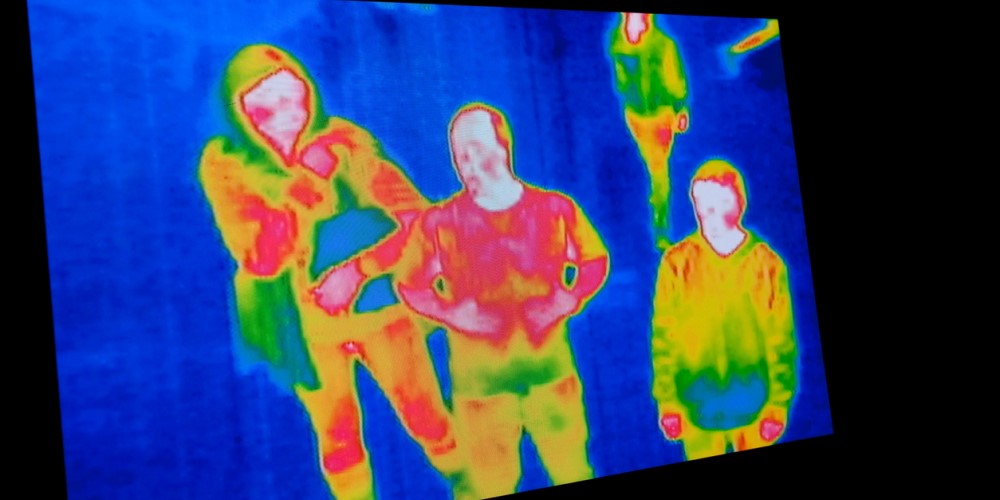Utilize Thermal Sensors Where Traditional Camera Tech Falls Short
Challenging surveillance conditions may call for extra support from thermal imaging cameras. Here’s how to utilize them.

Thermal imaging technology was originally developed for the defense industry more than 50 years ago to help the military branches identify heat sources, vehicles and other targets at night, and in challenging conditions.
After the Gulf War, production volumes had increased, which meant the cost to develop this technology had dropped. The U.S. Government declassified the technology, allowing it to be licensed to various manufacturers to design solutions for additional market use cases.
The first to be leveraged were firefighter municipalities, followed by law enforcement and many other commercial and industrial applications, all lining up to take advantage of this technology.
Thermal security cameras use a combination of specialized sensors and lenses to convert infrared energy, or heat emissions, from the objects it monitors into visible light colors or shades to show temperature variances. Since the human eye can only see in visible light scale, this gives a deeper insight into what the broader spectrum of infrared energy provides for scene content.
Unlike low-light surveillance cameras, thermal sensors have the ability to detect heat signatures in complete darkness or harsh environments like fog, smoke, dust, snow, rain and many other challenging conditions.
3 Classification Ranges
Thermal cameras, like any camera made up of an imager and lens, require proper design considerations when being used for various applications for security customers. The distance of detection must always be considered — whether for short- or far-reaching surveillance — and the lens must meet the requirement for accurate viewing.
A formal site walk must be conducted to understand the customer’s operations within the area of design. When detecting intruders breaching a property, having a scene that is less cluttered is key, as a thermal camera does not “see” through everything.
In addition, other major heat or retention sources in the scene must be made known to ensure proper detection or monitoring of the object of interest. Finally, a thermal imaging sensor does not reproduce the scene like a standard visible light camera. The thermal sensor allows for decision-making based on where the object of interest is within the scene.
There are three classification ranges for a thermal camera:
- Detection range provides the ability to detect something moving within the scene.
- Recognition is the ability to know that it is a person, vehicle or animal.
- Identification allows for additional assessment of the person to see they have a hat, coat or other basic details.
The image does not allow you to recognize the person’s identity. However, it shows there is someone in the scene within a variety of challenging environments that other cameras do not perform well in.
Expanding Thermal Use
One of the key evolutions of thermal technology for security applications has been the addition of video analytics for automated detection of specific objects classified in a scene. This allows for unattended event-based detection of an intruder or vehicle in the environment.
Combining these sets of technologies, and the continued decrease in the cost of a thermal imaging application, has allowed for many more customer applications to benefit from this type of solution.
While some of the original uses for thermal imaging were for expansive borders, ports and unmanned stations to detect perimeter breach threats during nighttime and other low-light conditions, the security industry is benefitting now in commercial-use cases to monitor perimeters or outdoor assets in equipment rentals; metal recycling facilities; warehousing and logistics; automotive service and repair; agriculture equipment dealer; as well as monitoring expensive equipment like motors, tanks and engines.
When monitored via central control stations, these sites and locations have always been a challenge because of false alarm scenarios like roaming wildlife, blowing trash, insects or weather conditions.
Implementing the benefits of thermal creates a far more viable solution that does not have the negative impact from false alarms that interrupt business or personal time, as well as the potential for false alarm fees.
These solutions may be designed in several ways depending on the needs of the customer. The thermal sensors can be tied into the local VMS and part of the overall video solution, or used independently to allow for a standalone detection source whose output could be tied or integrated to the alarm system.
Some alarm monitored applications may also benefit from the redundancy of a CCTV camera covering the same area of single or multiple thermal cameras for greater forensic details.
In shorter range field of views, it can be covered by one camera, but what also becomes a great advantage is to associate a pan/tilt/zoom camera with predefined positions to activate on an event trigger from a designated thermal sensor zone. This allows the higher level of detection and then forensic detail to address more completely the specific customer issues.
Now more than ever, integrators have the tools to provide customers with more comprehensive solutions for their challenging environments — by using intelligent thermal sensors where traditional camera technology falls short.
If you enjoyed this article and want to receive more valuable industry content like this, click here to sign up for our FREE digital newsletters!

Security Is Our Business, Too
For professionals who recommend, buy and install all types of electronic security equipment, a free subscription to Commercial Integrator + Security Sales & Integration is like having a consultant on call. You’ll find an ideal balance of technology and business coverage, with installation tips and techniques for products and updates on how to add to your bottom line.
A FREE subscription to the top resource for security and integration industry will prove to be invaluable.














